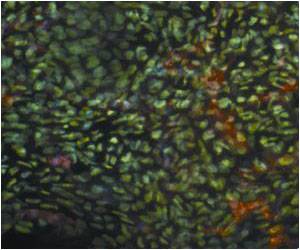
"The detection of CyCV-VN in a usually sterile material like cerebrospinal fluid is remarkable and may point to a pathogenic role of this virus as a single or a co-infecting pathogen," says corresponding author Tan Le Van of the Oxford University Clinical Research Unit in Ho Chi Minh City, Vietnam. The results in this study, Van cautions, do not provide absolute proof of disease causation, and further work is needed to see whether the virus poses a threat to human and animal health.
Acute central nervous system infections are responsible for illnesses and deaths around the world, but they are a particular problem in tropical regions. These infections can be caused by any of a number of bacterial, parasitic, fungal or viral pathogens, but the majority of cases go undiagnosed despite extensive efforts to identify a cause. "One of our particular interests is to improve patient diagnosis," says Van. Proper diagnosis is essential to improve clinical management and prevention of these devastating diseases, he continues.
Inspired by the high incidence of acute central nervous system infections in Vietnam, Van and his colleagues set out to identify previously uncharacterized viruses in undiagnosed patients. Using fluid samples from more than 1,700 patients with suspected central nervous system infections or suspected viral encephalitis, the researchers generated 161,000 DNA sequence reads for further analysis.
Among these thousands of sequences, the researchers identified a sequence from a member of the Cyclovirus genus that was present in two patients, one adult and one child, both with acute central nervous system infections of unknown cause. Follow-up work with a technique called inverse PCR used that short sequence to determine the entire genome sequence of the virus present in one of the samples. CyCV-VN is a unique new species of Cyclovirus, a group that includes no known pathogens.
With the full genome in hand, the researchers went back to 642 samples from patients with suspected acute central nervous system infections and were able to detect the virus in samples from 26 patients (4 percent). The virus was not detected at all in samples from patients with non-infectious conditions of the central nervous system, like multiple sclerosis, a fact that argues that the virus could well be a human pathogen.
Advertisement
Van also cautions that it is too soon to point an accusing finger at CyCV-VN. "Detection of a virus in human samples alone is insufficient to provide a direct link with an ongoing infection," he says. "Addressing the question of causation requires extensive effort."
Advertisement
Source-Eurekalert













